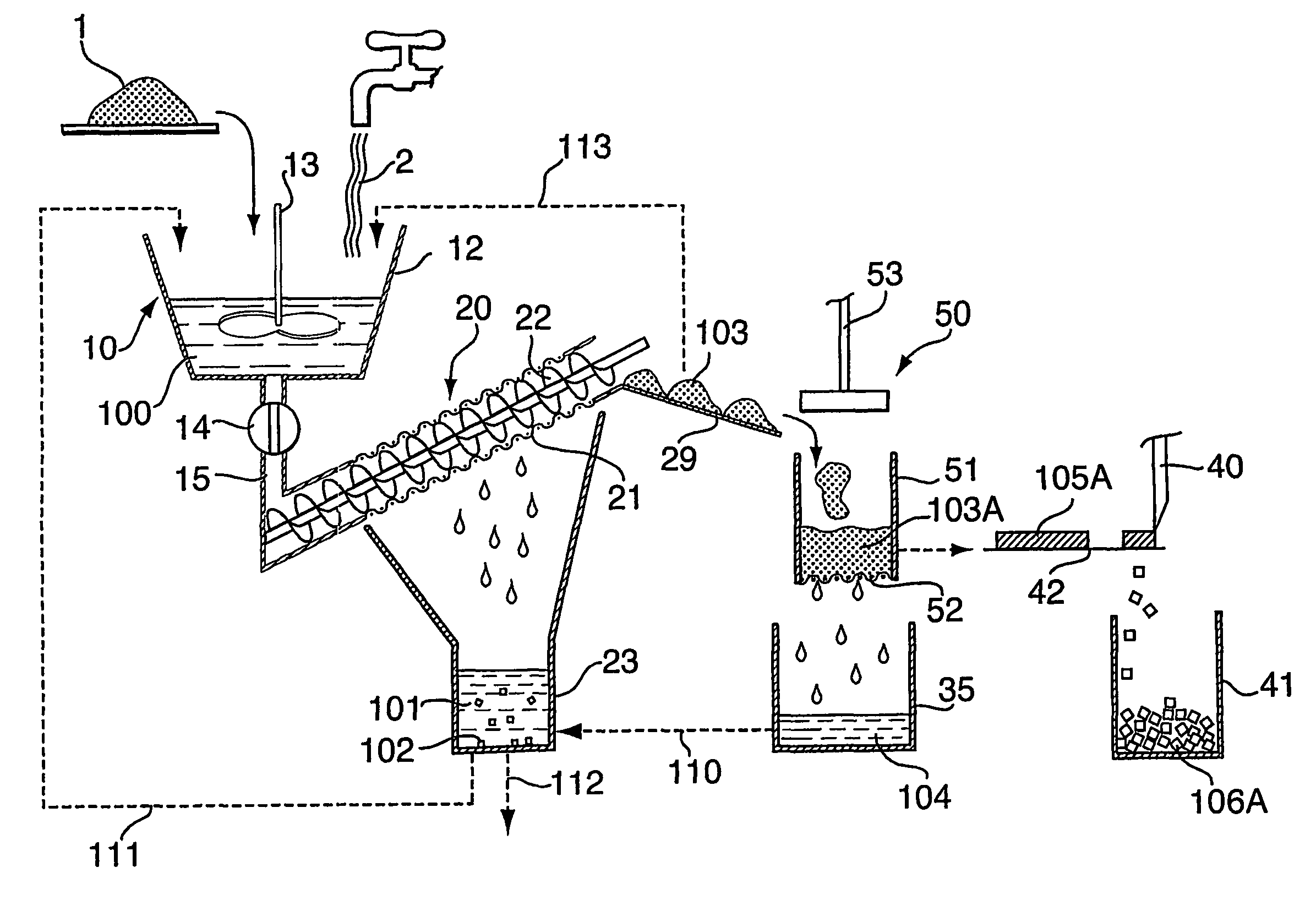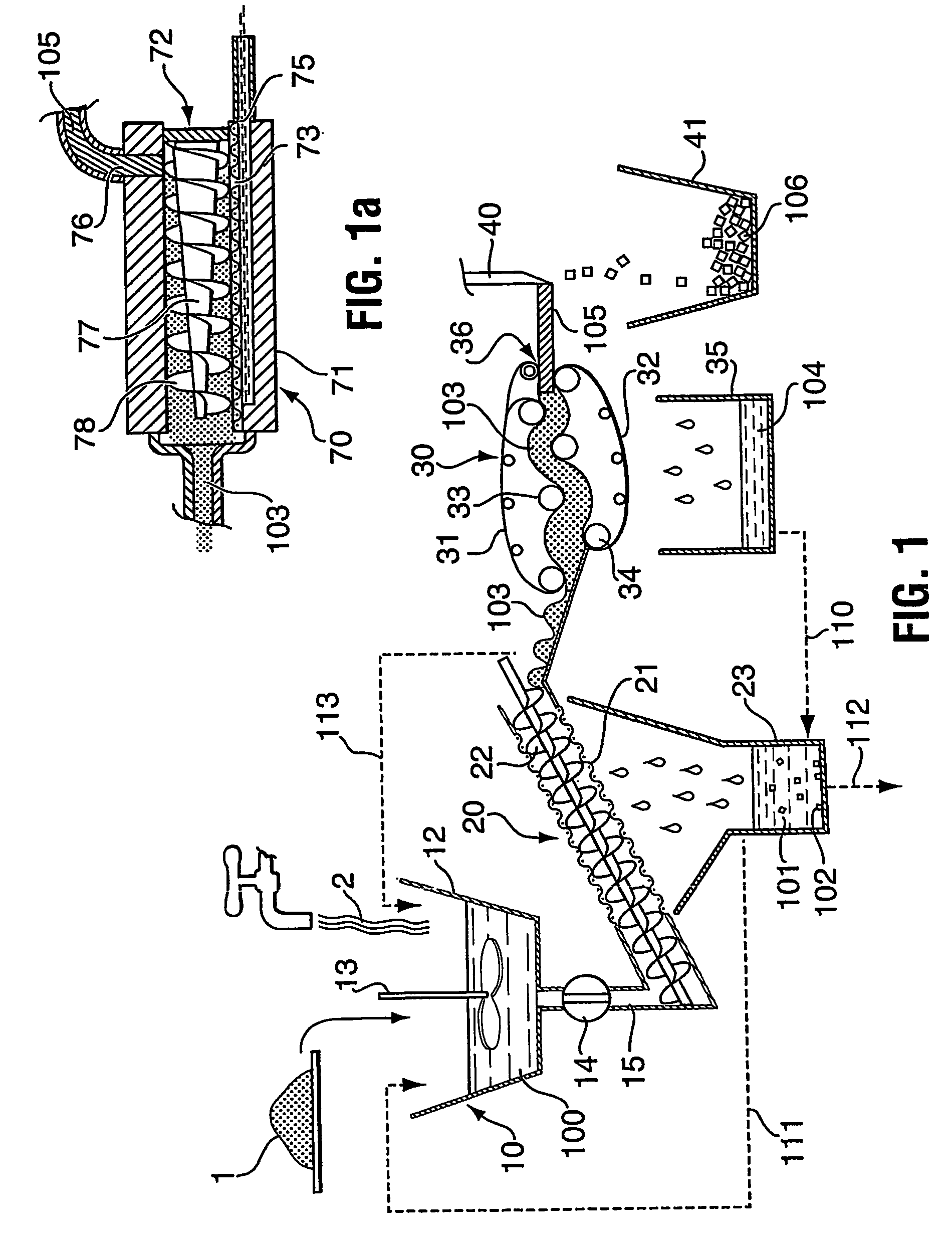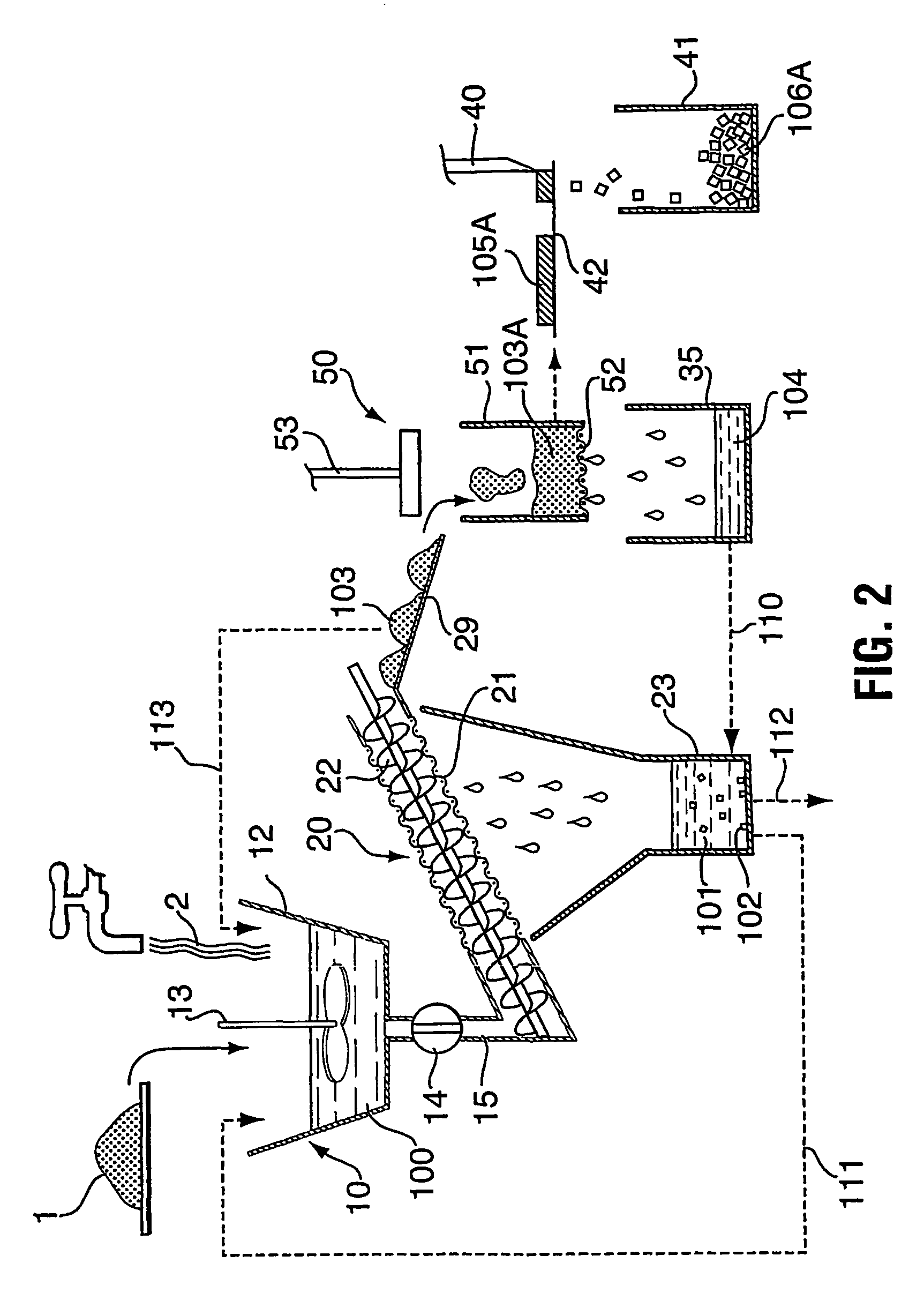Filtration of vegetable slurries
a technology of vegetable slurries and filtration, which is applied in the direction of filtration separation, protein composition of vegetable seeds, separation processes, etc., can solve the problems of affecting the nutritional value of the extract, and containing a considerable amount of residual oil
- Summary
- Abstract
- Description
- Claims
- Application Information
AI Technical Summary
Benefits of technology
Problems solved by technology
Method used
Image
Examples
example 2
Example Using the Process of the Invention
[0053]In this example, the apparatus shown schematically in FIG. 1 (an impeller type filter as shown schematically at 2 followed by a belt press as shown schematically at 30) was used.
[0054]Fifteen kg of oil-extracted desolventized canola flakes were slurried with 90 kg of water at 60° C. (6 parts water:1 part starting flake) and mixed to an even consistency over a 10 minute period. The slurry (which was very viscous) was feed to a impeller driven auger-type filter equipped with a 6 inch diameter conical filter screen with 118 micron sized openings (model FF-6, Vincent Corporation, Tampa, Fla., USA). The impeller propelled the slurry over the inner surface of the screen resulting in separation to generate a thick extract containing small fragments of cell meats and an extracted cake. The weights and dry matter contents of the extract and the filter cake were determined.
[0055]The filter cake from the impeller filtration step was relatively we...
PUM
| Property | Measurement | Unit |
|---|---|---|
| diameter | aaaaa | aaaaa |
| diameter | aaaaa | aaaaa |
| diameter | aaaaa | aaaaa |
Abstract
Description
Claims
Application Information
 Login to View More
Login to View More - R&D
- Intellectual Property
- Life Sciences
- Materials
- Tech Scout
- Unparalleled Data Quality
- Higher Quality Content
- 60% Fewer Hallucinations
Browse by: Latest US Patents, China's latest patents, Technical Efficacy Thesaurus, Application Domain, Technology Topic, Popular Technical Reports.
© 2025 PatSnap. All rights reserved.Legal|Privacy policy|Modern Slavery Act Transparency Statement|Sitemap|About US| Contact US: help@patsnap.com



